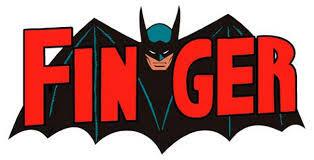 I picked up something interesting on the Baseball-Reference Blog the other day. But before we get into that, we must point out that Baseball-Reference.com just might be the greatest web site ever invented. For baseball geeks (like me), it’s an unending source of amusement and entertainment.
The truth is the little site that grew into a fulltime job for former St. Joe’s professor Sean Forman, is exactly what the web should be. It is perfect, and better yet, it keeps guys like me from lugging around silly things like media guides or the Baseball Encyclopedia from city to city and ballpark to ballpark.
I picked up something interesting on the Baseball-Reference Blog the other day. But before we get into that, we must point out that Baseball-Reference.com just might be the greatest web site ever invented. For baseball geeks (like me), it’s an unending source of amusement and entertainment.
The truth is the little site that grew into a fulltime job for former St. Joe’s professor Sean Forman, is exactly what the web should be. It is perfect, and better yet, it keeps guys like me from lugging around silly things like media guides or the Baseball Encyclopedia from city to city and ballpark to ballpark.
So for that, thank you Dr. Forman.
But really… actual media guides in a digital world?
Anyway, the thing I picked up on the blog carried the headline, “What worries me about Ryan Howard.” That’s a pretty catchy headline considering the Phillies’ offensive success hinges largely on Howard’s ability to hit home runs.
Actually, the Phillies’ success is all about the home run. If they don’t homer, they have trouble scoring runs. For instance, 25 of the team’s last 36 runs have come on home runs. That’s a whopping 69.4 percent. Moreover, this season the Phillies lead the Majors in runs from homers with more than 46 percent of their runs coming from homers.
Nevertheless, the Howard entry came with two graphs of stats showing the worst OPS+ values for 45 HR seasons in big league history, and the lowest OPS values for hitters with more than 30 bombs this season. In both Howard ranked third.
Now here’s the thing… how can averaging 50 homers per 162 games throughout his career be worrisome? Sure, Howard strikes out a lot and his walk totals have dipped this season, which has more to do with the fact that he no longer has Pat Burrell hitting behind him in the batting order.
As Howard himself might say, “It is what it is.” The Big Piece hits home runs at the expense of a lot of things, but he’s hardly the current version of Dave Kingman. Saying it’s worrisome that a guy slugging more than 45 homers a season and owning three of the franchise’s top four home-run producing seasons is kind of silly. It doesn’t really explain the type of player Howard is – or has become.
The guy actually fields his position now, and may finally be learning to use the entire field when making contact which could render those dreaded shifts as useful as an actual media guide.
This isn’t to say Howard is the most complete player on the team – far from it. But there isn’t a real reason to be “worried” about Howard yet. In fact, saying there’s worry over a guy who has blasted 214 home runs in 698 games (with 610 RBIs) is kind of like eating ice cream and complaining that there weren’t enough red sprinkles on it.
Even if the green, yellow and blue clearly outnumbered the red ones, it’s hardly a rip off.
No, the time to get worried about Howard is when he stops hitting 45-plus homers a season. Because when he stops doing that, he becomes the current-day Steve Balboni and (nothing against Balboni) no one wants to see that.
But really… what’s with the Phillies and homers? Here’s a little stat from the 2008 post-season – the Phillies scored 64 runs against Milwaukee, Los Angeles and Tampa Bay to win the World Series and of those runs 32 came on homers.
It breaks down like this:
14 of 24 in the World Series 8 of 25 in the NLCS 10 of 15 in the NLDS
Feast or famine, huh?




